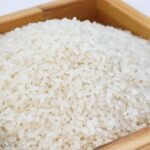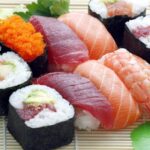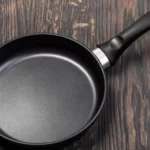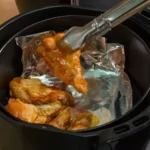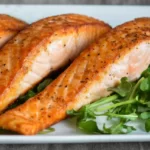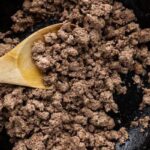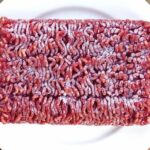Is Smoked Salmon Cooked Or Raw? Let’s See
One question that comes up: is smoked salmon cooked or raw? Salmon can be cold or hot smoked, depending on the dish. When salmon is hot-smoked (120-225°F/49-82°C), it is cooked all the way through. Although it may have a longer shelf life, cold-smoked salmon (75–90°F/24–32°C) is still regarded as raw.
Although knowing this is helpful, there are still lots of other concerns that might exist regarding the safety of smoked salmon. The most frequently asked questions about smoked salmon are listed below.
Table of Contents
What is Smoked Salmon?
Smoked salmon is the name given to salmon that is first cured then smoked. Whether it is wild or farmed, salmon is an expensive fish. Consequently, smoked salmon is not the most affordable food either.
And despite its high price, smoked salmon is very popular in different parts of Europe and in the US too. Philadelphia rolls are among the most common dishes in the US that use smoked salmon.
Salmon smoked over a long period of time. Smoking salmon has been a way to preserve this fish during the Smoking was a common method of preserving fish during the Middle Ages because it effectively eradicates the majority of the bacteria that exist in raw fish.
Previously made only with salt, smoked salmon is now offered in a variety of flavors. Honey, mango, lime, barbeque sauce, maple syrup, and black pepper are some flavor options for smoked salmon.

Is Smoked Salmon Safe to Eat?
Everyone now questions the product’s safety in light of recent news reports about Listeria bacteria being found in smoked salmon. The fact that popular salmon products contain this deadly pathogen makes it even more concerning. With everyone doubting the safety of this food, what makes it safe for consumption?
The good news is that salmon can be free of foodborne pathogens whether it is commercially produced or home-smoked. It’s safe to eat as long as you prepare it and store it according to best practices. The most common dangers are heat, smoke, and salt.
Salmon can become the ideal environment for pathogens to grow in if it is not salted and cooked properly before smoking. For example, if you store smoked salmon in vacuum packing in refrigerators (not freezers) for a long time, you are able to catch botulism.

Salmon Smoking Methods – What’s the Difference?
The type of smoking method used can affect the safety of salmon. The two most common methods of smoking salmon are cold smoking and hot smoking. Here are the differences in safety according to how they are prepared:
Cold Smoking
The majority of experts concur that salmon that has been cold smoked poses more risk than salmon that has been hot smoked. After all, the latter uses 80-90F while curing and smoking the fish.
Fish that is cold smoked has not been pasteurized. That means it needs careful handling to ensure that it’s free from harmful pathogens. The result is a product safe for healthy people with an uncompromised immune system.
Salmon that has been cold-smoked poses the same dangers to expectant mothers as other semi-raw meat products do. Elderly people and those with compromised immune systems should avoid it. People from these groups are advised to avoid it by the majority of nations.
Additionally, bear in mind that salmon that has been cold smoked has a limited shelf life. It only keeps fresh for a week or two in the fridge, but a freezer can keep it fresh for up to a month. This is due to the Listeria bacteria that can grow even at lower temperatures.
Hot Smoking
When hot smoking salmon, you frequently prefer to brine it rather than cure it first. The temperature used while smoking the salmon is 120-225°F or more. In the end, the natural flavor of the product is more apparent. Salmon that has been hot smoked may have a longer shelf life and frequently does not require refrigeration as long as it is kept in the original packaging.
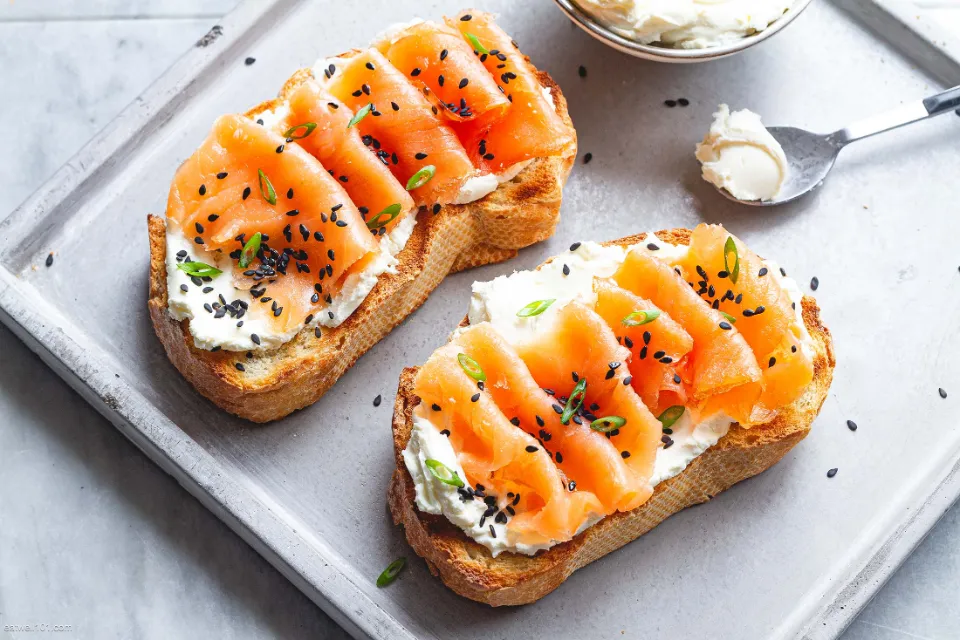
Is Smoked Salmon Safe to Eat Without Cooking?
Regardless of the type of smoking used, smoked salmon is safe to eat without cooking or heating. This is especially true for commercial salmon because it goes through a multi-stage process that kills most pathogens. Various bacteria may develop in cold-smoked salmon, but as long as it is consumed right away or within the allotted time, the bacteria won’t get to a point where it is harmful.
Salmon that has been hot-smoked typically has no bacterial issues. In order to kill any potential contaminants, it is cooked at high temperatures, as was previously stated. Reheating it is therefore unnecessary and will actually make the salmon dry out.
The label on the packaging should be examined nonetheless. If the salmon doesn’t need to be reheated, it should say so. In most cases, avoid directly heating the fish because doing so could taint its delicate flavor.
What Are the Benefits of Eating Smoked Salmon?
Fresh salmon is a superfood, as we all know. So, it is not surprising that smoked salmon is healthy too. The salmon retains a high level of nutrients even after curing and smoking.
Smoked salmon is a good source of protein, B vitamins, vitamin A, a range of minerals, and most importantly, omega-3 fatty acids.
Remember that smoked salmon is salted to preserve it despite all these advantages. So, it contains a lot of sodium. 100 grams of smoked salmon may contain around 670 mg of sodium. So, try to consume smoked salmon in moderation.
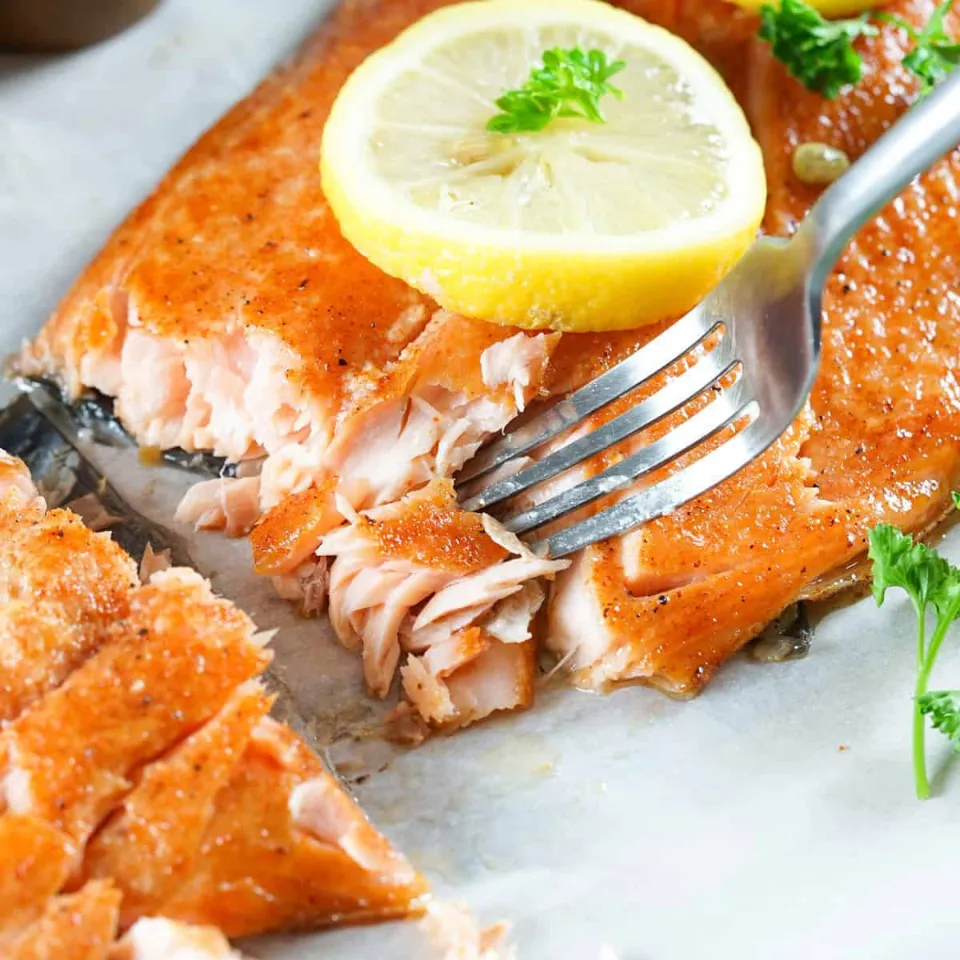
Signs of Ruined Smoked Salmon
It’s never a good idea to eat spoiled smoked salmon. Always keep an eye out for these symptoms to protect yourself and your family from food poisoning.
It’s Way past the Best-By Date
Although unopened salmon can last for another 2-3 days after its date when stored properly, you shouldn’t try your luck if it’s been lying around for too long. I’d say 5 to 7 days past the used-by dates is as far as you should go.
The Salmon Smells Bad
When it comes to spoiled food, the smell is a great indicator. It’s also one of the best signals to detect spoiled salmon. Apart from the smokiness, smoked salmon should have an almost neutral smell. If there’s a rancid, ammonia, or fishy smell, you don’t want to eat that fish.
There’s Mold on the Fish
If your salmon has been opened and stored for more than 10 days, you might see mold on it. When this occurs, you should immediately throw the fish away.
It Has Changed Color
Old salmon could turn white, dull, or greenish in color. Remember to taste it first if there’s a small amount of discoloration; if there is, it’s probably still safe to eat. Toss the fish out, though, if a sizable portion of them has turned a different color.
It’s Extra Slimy
Even in its ideal state, smoked salmon has a slight sliminess. However, if your fish has developed an extra slippery and thick film, there’s no reason to keep it around.
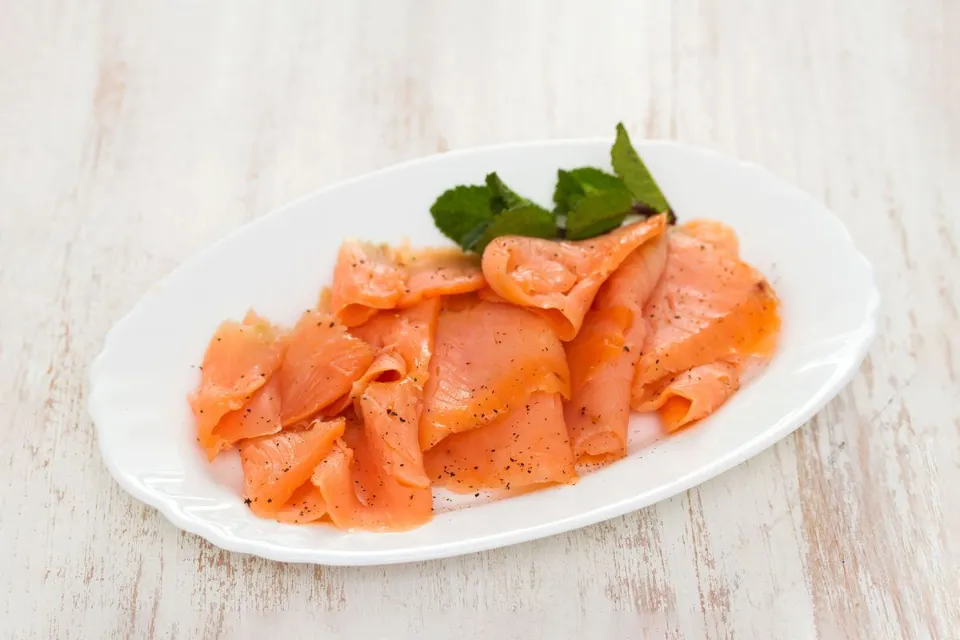
Is Hot Or Cold Smoked Salmon Better?
If you are choosing between hot or cold salmon, there are a few things to consider.
Firstly, hot smoking cooks the fish while cold smoking doesn’t. It might be best for you to choose hot smoked salmon if you have a sensitive stomach.
Secondly, consider the slight differences in texture. With a texture similar to raw salmon, cold-smoked salmon is more tender and moist. Salmon becomes firmer through hot smoking.
Third, choose between hot or cold-smoked salmon depending on how smoky you like your fish to be. Salmon that has been hot smoked has a stronger smoky flavor and aroma than salmon that has been cold smoked.
Lastly, consider how you will be using the smoked salmon. Thanks to its texture, hot-smoked salmon is suitable for use in salads and pasta dishes. Hot-smoked fish is also better for dips.
Contrarily, cold-smoked salmon is better suited for sandwiches, canapes, and other dishes where the delicate flavor of the salmon is the star.
How to Store Smoked Salmon?
Typically, smoked salmon is packaged in vacuum-sealed bags. Read the label to find out how to store the salmon before opening the package.
Smoked salmon should be kept in the refrigerator or freezer after being unwrapped. While some people think they can store smoked salmon at room temperature, doing this is not safe.
Once the package has been opened, place the smoked salmon in an airtight container or wrap it in plastic wrap. You can keep smoked salmon in the fridge for up to 21 days.
Always remove as many salmon slices as you intend to consume.
When eating breakfast or dinner, don’t remove the entire container from the fridge and then put it back in. The fish will quickly degrade if it is subjected to such temperature swings.
If you want to keep smoked salmon for a longer period of time, you can store it in the freezer. The freezer will make the salmon keep well for up to 3 months.
If you know you won’t finish the salmon within 2-3 weeks, freeze it as soon as possible for the best results.
To avoid freezer burn and drying out, store smoked salmon in its original packaging or tightly wrap it in plastic wrap and place it in the freezer.
When it’s time to defrost, move the salmon from the freezer to the refrigerator and allow it to thaw there. Defrosting fish at room temperature increases the possibility of contamination, so avoid doing it.
The length of time it takes for the salmon to defrost depends on its size.
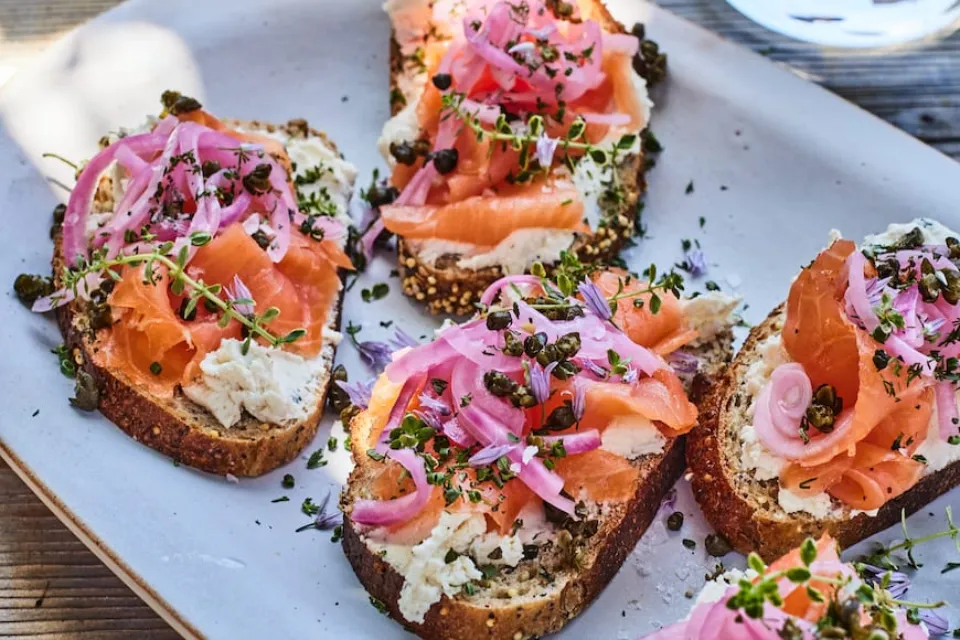
FAQs of is Smoked Salmon Cooked Or Raw
Can You Heat Up Cold Smoked Salmon?
Cold-smoked salmon can be heated, but it is not required. Salmon that has been cold-smoked without being cooked is usually safe to eat. However, if you prefer your salmon heated, you can cook it gently in a pan over low heat or in the oven on a low setting. Just be sure not to overcook the salmon, as this will dry it out and make it less flavorful.
Does Vacuum-sealed Smoked Salmon Need to Be Refrigerated?
Smoked salmon that has been vacuum-sealed can be kept at room temperature without needing to be chilled. The salmon must be kept, however, away from heat sources and in a cool, dark environment. The salmon should be stored in the coldest section of the refrigerator if it will be refrigerated.
Why is Smoked Salmon So Tasty?
Smoked salmon is a delicacy that is enjoyed by many people. It has a flavor all its own that is savory and rich.
Because of the smoking process, smoked salmon has a wonderful flavor. Salmon that has been smoked has a distinct flavor and texture that can only be achieved through smoking.
Smoked salmon is often said to have a “smoky” flavor. This is due to the salmon’s smoky flavor and aroma from the smoking process.
The salmon’s flavor also depends on the kind of wood used to smoke it. The flavor profile of the salmon will vary depending on the type of wood used.
For example, alder wood imparts a sweet and fruity flavor, while hickory wood gives the salmon a more intense smoky flavor.
Is Smoked Salmon Sashimi?
The short answer is no, smoked salmon is not sashimi.
In the Japanese dish sashimi, raw fish is sliced into small pieces and served without rice. It is usually made with tuna, salmon, or other types of seafood.
On the other hand, smoked salmon is a variety of cured salmon. It is preserved with smoke, salt, and — occasionally — sugar. A few days to several weeks may pass during the curing process.
After the salmon has been cured, it is smoked with wood chips or sawdust. This gives the salmon its characteristic smoky flavor.
Can You Eat Smoked Salmon Every Day?
You can consume smoked salmon every day, yes. There are no known health risks associated with eating smoked salmon on a daily basis. In fact, a lot of health professionals advise eating fish two or three times per week.
Is Smoked Salmon Cooked Or Raw?
The key query of this article is now: Is smoked salmon cooked or raw? What kind of smoked salmon you’re referring to will determine the answer, I suppose.
Since hot-smoked salmon is made at 120°F to 180°F for at least 6 hours, the high heat has already cooked the fish thoroughly.
Cold-smoked salmon, on the other hand, is considered raw as the low temperature used while smoking doesn’t have much cooking effect.
That said, both hot and cold-smoked salmon can be eaten fresh out of the packages without any cooking. However, they work best in various kinds of recipes. Continue reading for some fantastic ideas on how to use your smoked salmon.








